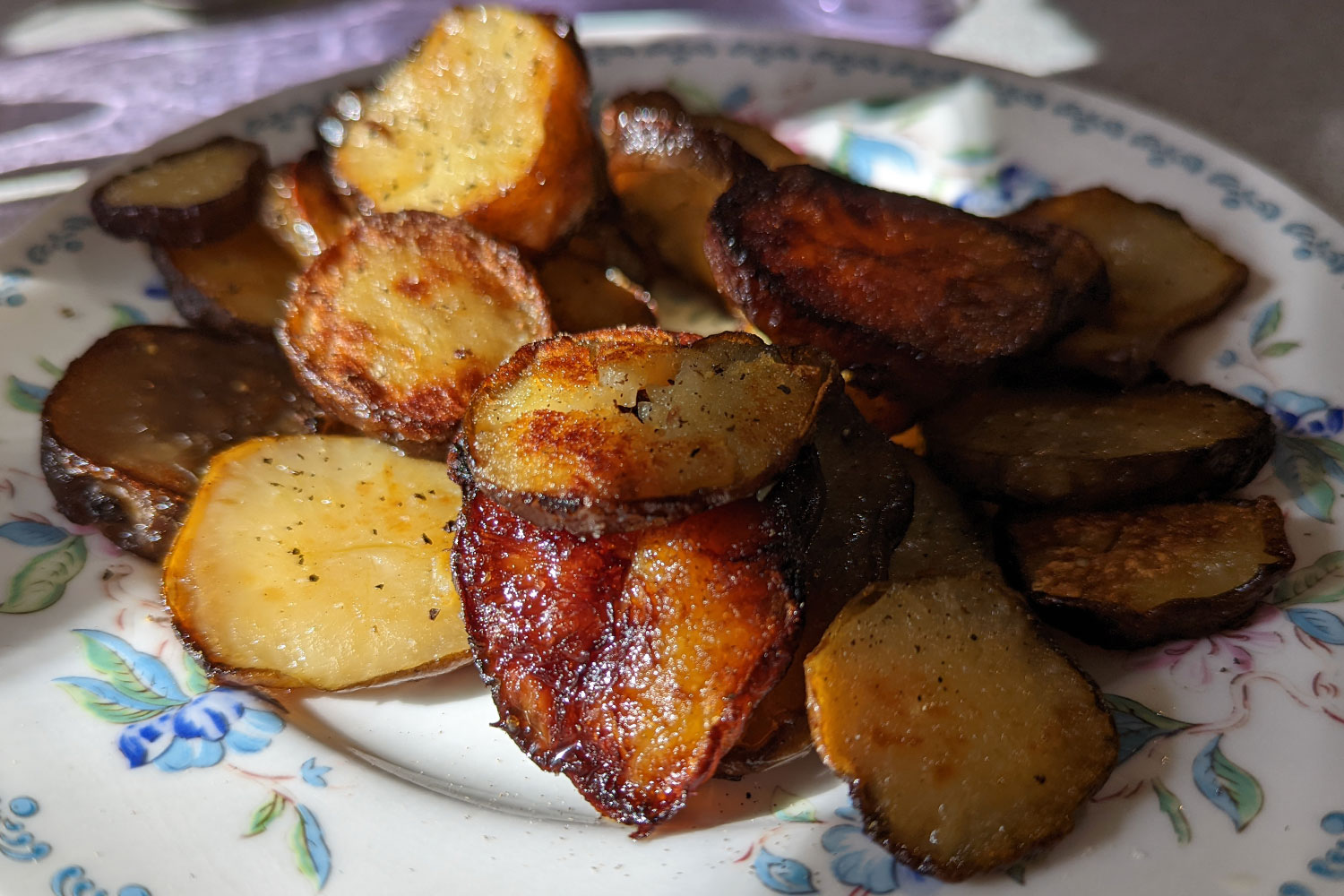As our climate changes, so will our diets. Fix’s Climate Future Cookbook introduces you to foods that show what sustainable, equitable, and resilient eating could look like. Do try this at home.
May 2049
Ollie is at that age where he responds to everything with the same question: Why? He asks you this when you tell him you won’t be keeping the camas bulbs you just dug up from your garden.
“We’re sending them off with Cleo, to take to the tribe,” you explain.
“Why?”
“Well … because this is food that Cleo’s ancestors ate, not ours. That’s why the tribe has rights to certain things, like the camas. Even though we grow it in our yard, it’s theirs.”
“But why?”
You pause. You see your husband shaking his head no, but you’ve always felt Ollie should get honest answers. Still, it’s too much to try to explain the history of colonization and the proliferation of landback gardens to a toddler. You let his question dissipate like sea spray. Someday, he’ll understand it all.
He’s looking quizzically at a camas bulb. He starts to put it in his mouth.
“No, Ollie!” you say, grabbing the bulb. ”Don’t eat that raw, it’ll make you pooty.”
He looks sheepishly at the confiscated bulb, then at you. You decide to preempt his next question.
“Tell you what. We’ll save a few bulbs and I’ll show you a way to cook them. It’ll be fun. You can see what they taste like, and I’ll tell you why it’s important that we save the rest for Cleo.” You smile as you scoop up your curious, beautiful son. “Deal?”
Learn about camas: The Indigenous tribe reviving native camas and the prairies that sustain it

Twice-cooked camas
Yield: 2 servings
Time: 20 minutes active time, plus 12 hours of cooking time
This recipe uses foraged camas, a staple crop in the traditional diets of Indigenous peoples in the Pacific Northwest. Try making it with sunchoke, a more widely available, inulin-based root vegetable that is also native to North America.
Camas (and sunchoke) needs to be cooked slowly and for a long time before you do anything else with it. If you skip this step, all the inulin in the bulbs will still be present when you serve them, and you will all be farting like crazy in a few hours. Slow, moist cooking breaks the inulin down into fructose. You could try cooking longer or at a higher temperature for different effects.
* * *
INGREDIENTS
- ½ pound blue camas bulbs, about a dozen
- 1 tablespoon olive oil or butter
- 1 tablespoon lemon juice
- Smoked salt
INSTRUCTIONS
- Heat oven to 225 degrees.
- Remove the papery sheath from the bulbs and discard. Place bulbs in an oven-proof container with a lid, such as a Dutch oven. Pour in just enough water to cover the bottom of the container by a quarter of an inch or so. Cover and bake the camas bulbs for 12 hours. (*Check on them after about 8 hours — this should be plenty if you’re substituting sunchokes.) You want them to range in color from pale gold to full golden. Set aside until cool enough to handle.
- Slice the bulbs into rings and lightly sprinkle with fine salt. Sauté in olive oil or butter until beginning to brown, about 5-6 minutes. They will be a little sticky, so stir continuously or toss the pan for the first minute or so, to prevent the bulbs from sticking. Keep an eye on them, as the sugars in the camas will caramelize fast.
- To finish, toss with the lemon juice and dust with the smoked salt. Serve immediately.
Recipe courtesy of the Jamestown S’Klallam Tribe
Try more recipes from Fix’s Climate Future Cookbook:
- Peanut butter, banana, and cricket smoothie (pet-friendly!)
- Veggie spirulina meatballs
- Fermented pawpaw hot sauce




